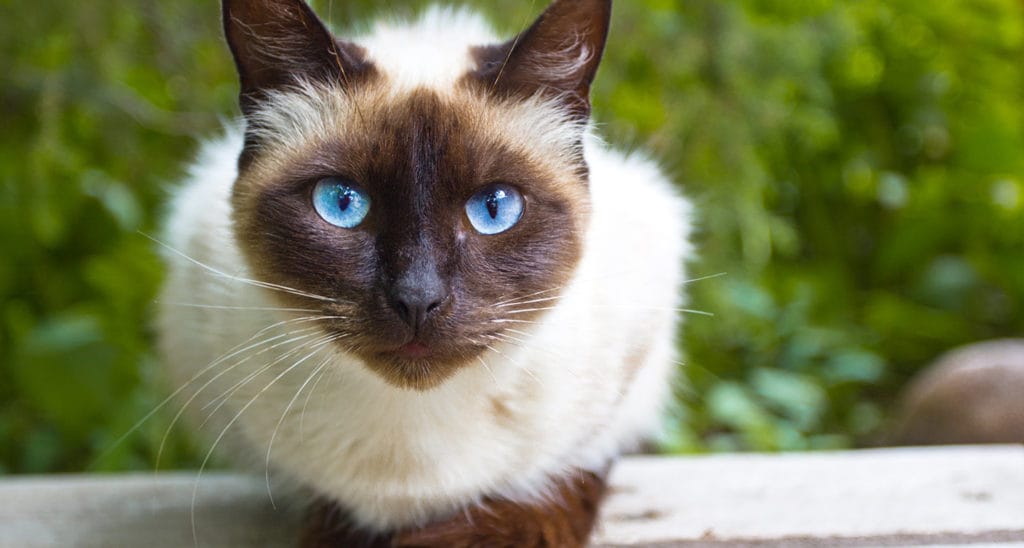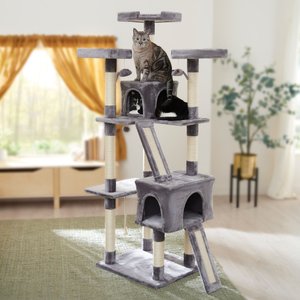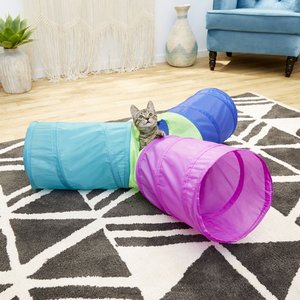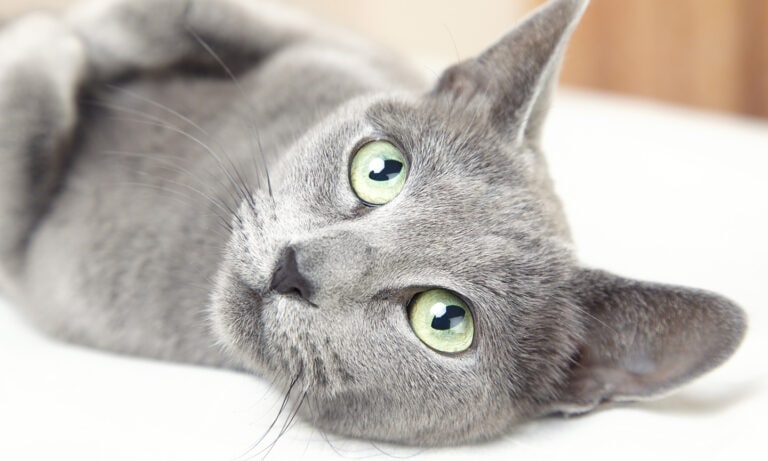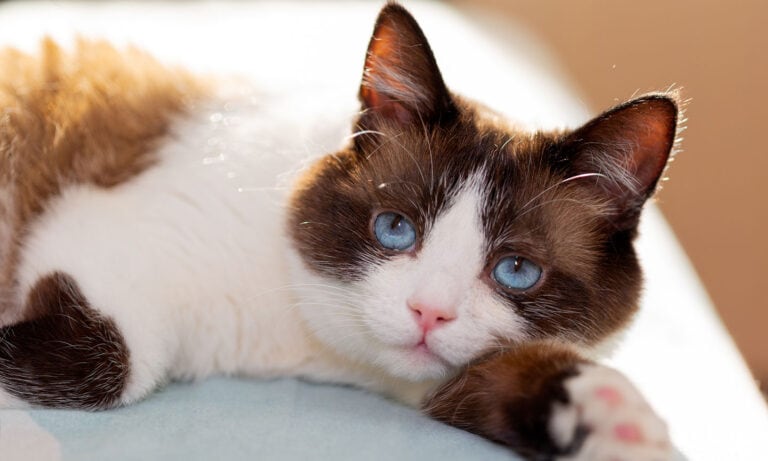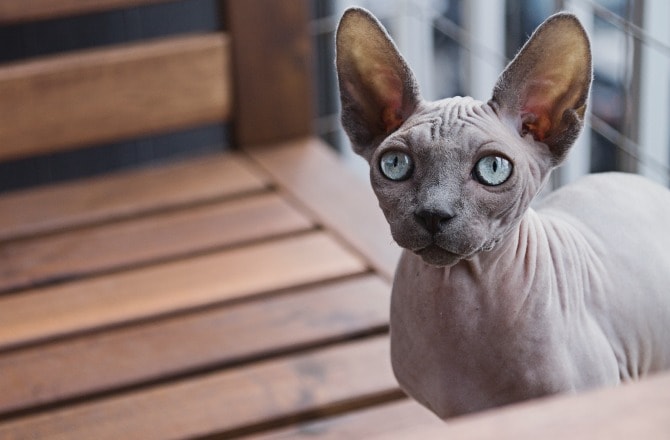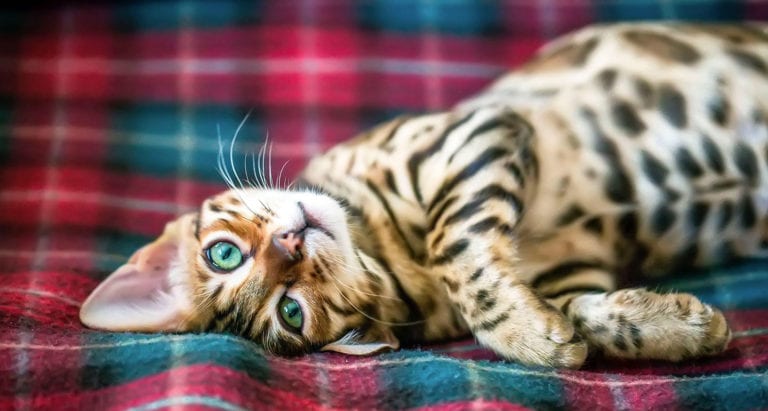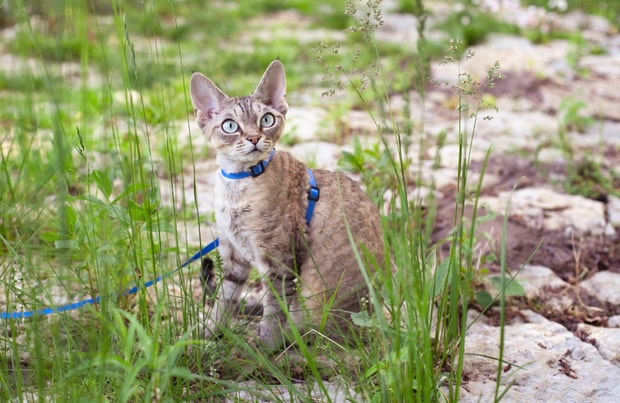With their cream-colored fur with the darker accents, long limbs and their expressive eyes, the Siamese cat is nothing short of elegant. Often sociable and happy to “talk” to you when you come home, these graceful beauties are also people-pleasers, and are always ready to have fun whenever you are. Whether you’re a one-person fam or have an entire clan, a Siamese cat might just be the perfect family pet for you.
Siamese Cat Breed Facts
One of the oldest cat breeds in the world, these kitties actually originated in Thailand, or Siam as it was known in the late 1800s when these cats began to be exported.
- Weight: Males, 8-12 pounds; females, 5-8 pounds
- Length: 12-14 inches
- Life Span: Between 11 and 20 years, with the average being about 15
- Coat: Short hair
- Color: Seal point, chocolate point, blue point and lilac point, with a light-colored main coat, ranging from white to fawn, and darker legs, tail, face and ears, ranging from black to pinkish gray (known as lilac)
- Eye Color: Vivid blue
- Ears: Large and pointed
Siamese Cat Characteristics
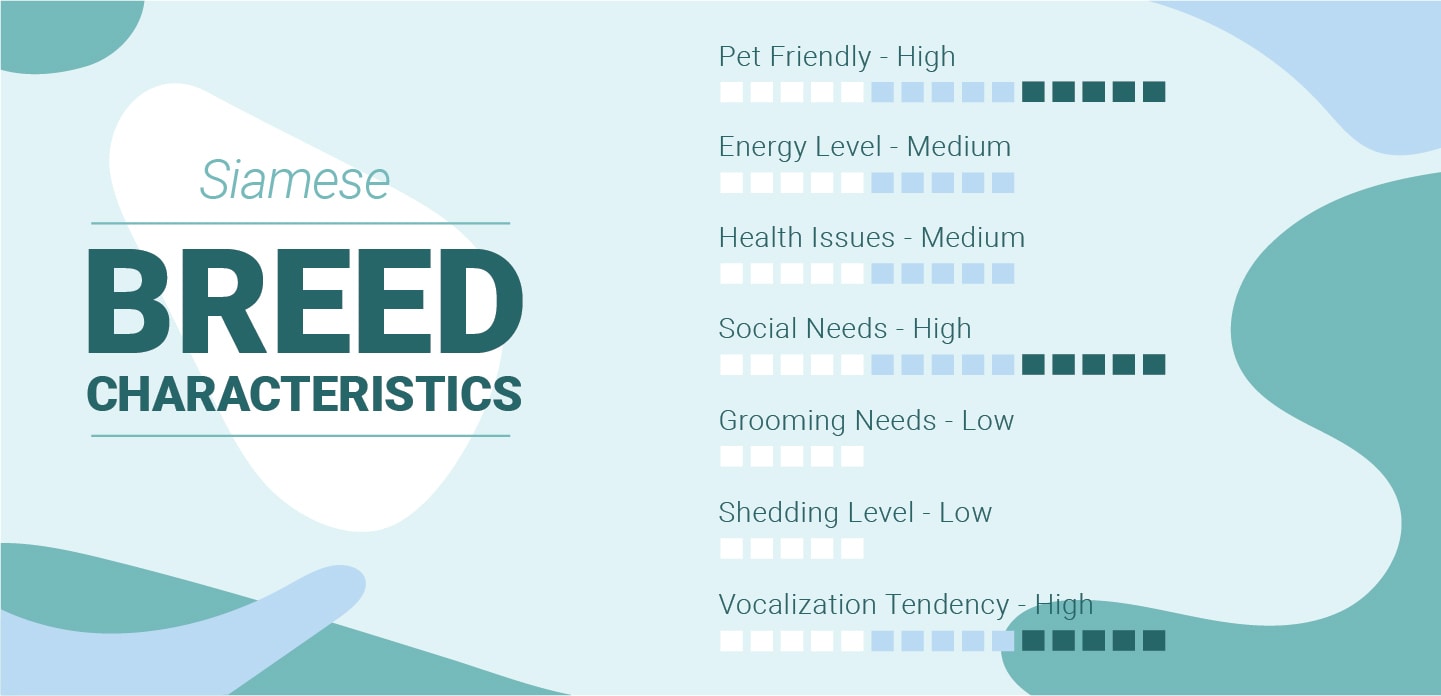
Siamese Cat Breed History
There are many legends surrounding the origins of these beautiful cats, including the one that they’re descended from the sacred temple cats of what is now Thailand (formerly Siam). While the breed probably didn’t get its start in a temple, they’ve been popular pets in their home country for centuries. They were even immortalized in a book of poems from the Ayutthaya period (14th-18th centuries) called “Tamra Maew,” appearing in the illustrations as white cats with black legs, ears and tails.
The first Siamese cat came to the United States in 1878, as a gift to President Rutherford B. Hayes. The First Lady named the cat Siam, and within a few years, people were breeding these felines in the U.S. and England. The Cat Fanciers Association officially recognized the breed in 1906.
Fast-forward to the 1950s and ‘60s, when the breed was a favorite in Disney movies, from “The Lady and the Tramp” to “The Incredible Journey,” and popping up in episodes of “Bewitched.” Now they often rank highly on Cat Fancier’s list of most popular kitties, scoring lucky number 13 in 2018.
Expect Siamese cat prices to reach up to $1,000 for a pedigreed feline from reputable Siamese breeders, though you can find them for a few hundred dollars less. Alternatively, you could also rescue a Siamese kitty. Find Siamese cat rescue groups by visiting the National Siamese Cat Club, or you can keep an eye out for the breed at your local shelter.
What Does a Siamese Cat Look Like?
Consider Siamese cats the supermodels of the cat world—they’re long, lean and leggy. They have long thin legs and an equally long slender tail; a long, pointed face topped by big triangular ears; and a long svelte body.
Then there’s the fur of the Siamese, which is short and sleek. Siamese kittens, born solid white or cream, slowly develop their darker face, legs and tail as they mature. The classic color for these cool cats is the seal point Siamese—the body is cream or fawn and the legs, ears, mask (eyes and nose) and tail are a rich dark brown. But Siamese cats can also come in other colors, too, that include chocolate point, blue point and lilac point, though the markings remain the same (the contrast of a lighter-color body with darker colored legs, face, ears and tail).
As for the eyes of a Siamese cat, they are almond-shaped and somewhat slanted, and a rich shade of blue. You may find yourself unable to look away (not that you’d want to)!

Siamese Cat Personality
The Siamese cat’s personality is typically sociable and friendly. These long, slim, athletic cats love people of all ages including kids, as well as other cats and cat-friendly dogs. They’re usually playful and love lap snuggling. Known for their distinctive, sometimes strident meow, Siamese cats have loud opinions they eagerly share: They will carry on meow-conversations, and seem to always want the last word!
This athletic, agile breed demands attention, and needs a lot of interactive games and toys to prevent boredom. They love climbing and readily jump great heights. Siamese cats may also use their paws to open doors, twist on faucets or even turn on the television. With smarts like that, trick training and games of fetch come easily to them. They are best suited to families able and willing to give them plenty of attention and interaction. If you’re able to, adopting a pair may help keep them both entertained.
Keeping Siamese Cats Healthy: Health Issues to Watch Out For
Although there are a large number of conditions that are known to be prevalent within the Siamese breed, conditions will vary in different breeding lineages, so it is important to know the family history of your Siamese. Take some time to interview Siamese breeders, get the health history on the family line and consider a Siamese that doesn’t have the angular “show look” if you want to have a kitty more likely to be free of health problems. And if you opt for adoption, be sure to get as much health history on the cat as the rescue organization is able to provide.
Perhaps the most common health problem is related to the “Siamese look”: Siamese are more prone to sinus and respiratory issues given the angular shape of their faces, as well as an increased frequency of dental problems. (Be sure to learn how to properly brush your cat’s teeth here.)
Although many seem to deal with it well, the crossed eyes that some Siamese cats have can occasionally cause problems for them, as well. Another eye issue, Progressive Retinal Atrophy (PRA), is a progressive genetic disorder that can ultimately lead to blindness in affected cats. Vision problems can start as young as 4 weeks of age, or may be delayed to as late as 12 years of age. Animals with the disease can be identified by an ophthalmologist, but a blood test is available to determine if a particular animal is a carrier. Unfortunately, there is no cure available for this condition.
Another issue known to affect Siamese cats is vitiligo, a genetic disorder which results in the lightening of the skin and/or hair. These lesions can be progressive over time, and the nose and footpads are often the most severely affected. It is more common in young female cats. Luckily, while there is no treatment, the problem is cosmetic only.
How to Care for a Siamese Cat
Like any pet, Siamese cats require specialized care, and it’s important to understand their individual needs so you can be the best cat parent you can be.
Grooming
Do Siamese cats shed? Well, Siamese are short-haired cats so while they do shed some, it’s not as noticeable as with other longer-haired breeds. Their coats generally only require brushing several times per week. They should have their nails clipped on a regular basis (once a month is generally adequate), and in a perfect world, should have their teeth brushed daily.
Nutrition
While there are breed-specific cat foods available, a normal, healthy Siamese does not require anything too special in the way of diet. Be sure you’re offering age-appropriate food: You want to ensure it provides the nutrition your young kitten or adult cat needs. You can learn more about how (and what) to feed your cat during every life stage here, and remember to always discuss their diet with your vet.
Exercise and Play
Siamese are intelligent enough to learn tricks, can be clicker trained and can oftentimes solve how to get to wherever you place a forbidden item.
Puzzle toys, like the Trixie Brain Mover Activity Strategy Game Cat Toy, that challenge your cat’s brain can help prevent boredom and keep your kitty from seeking out trouble. Clicker training and teaching cat tricks also engages the smart feline to better channel energy into legal outlets (Learn how to teach your cat to play fetch here). Siamese cats also excel at agility games, so try adding cat trees or shelving, cat tunnels and other fun outlets for play.
Siamese Cat Behavioral Tips
As mentioned above, you can prevent your Siamese from lounging on the mantel or swinging from the drapes by providing lots of high places like cat trees for perching and climbing. For cat “burglars” who like to raid kitchen cabinets, child-proof fasteners can help keep your Siamese out of trouble.
Pay attention to what you do in response to your Siamese’s meowing—you may be encouraging them to “talk back.” Do you open a door, offer food or shower them with attention when they meow? You’re allowing the cat to call the shots! Immediately resist responding to their vocalization, or your Siamese may meow constantly to get their way.
Siamese cats can become so strongly bonded to one person, and separation behaviors such as meowing loudly or peeing on human beds may become a problem. This anxiety may require the help of a veterinary behaviorist. If feasible for your family, introducing other pets early during kittenhood can relieve the dependency. Also, be sure that all family members interact with and provide play or food to your Siamese cat.
Siamese cats may not be purrfectly suitable for all households, but will certainly be the life of the party should you decide that one will work with your lifestyle. They crave attention, so you have to be prepared to give them plenty of playtime. In return, you’re likely to get plenty of cuddles when your Siamese snuggles under the covers at night or curls up on your lap. Bring on the purrs!
Read more:
Share:
